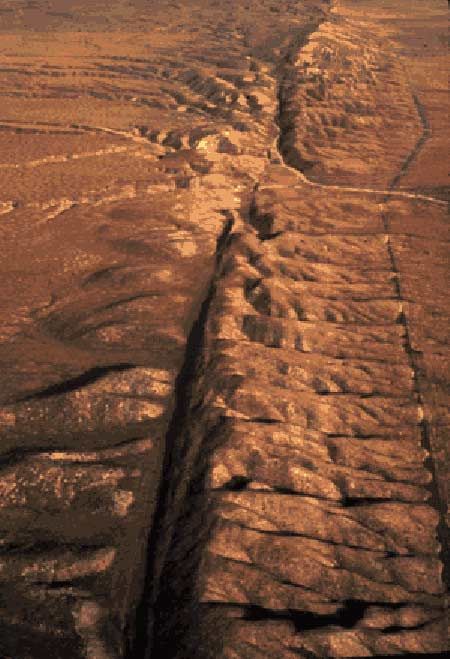Earthquake Faults Talk, Both Shake

An extensive fault that tracks the Pacific coast of North America from Canada to Northern California could trigger major quakes along California's San Andreas Fault, a new study suggests. "The faults seem to be communicating with each other," said study leader Chris Goldfinger of Oregon State University. The evidence came from core samples of marine sediments taken along the northern California seabed. There, seismologists found 15 turbidites, sediment deposits that are created when an earthquake triggers an underwater landslide. The turbidites correspond to earthquakes along the San Andreas Fault, including the great 1906 earthquake that destroyed large parts of San Francisco. The study, detailed in the April issue of the Bulletin of the Seismological Society of America, revealed that 13 out of 15 of the San Andreas earthquakes in the past 3,000 years occurred at almost the same time (in geological terms) as quakes along the southern portion of the Cascadia fault. The Cascadia temblors preceded the ruptures along the San Andreas by an average of about 25 to 45 years (to seismologists who study events across millions and billions of years, that's a close match). "It's either an amazing coincidence or one fault triggered the other," Goldfinger said. The Cascadia and San Andreas Faults meet a third fault, the Mendocino, at a spot just off Cape Mendocino in California that Goldfinger describes as "a kind of plate tectonics oddity where three plates come together." At this triple junction, seismologists have observed significant deformation and seismic activity. Goldfinger told LiveScience that it's likely that whatever happens to one fault would affect the others. This could happen because as an earthquake relieves stress in one part of a fault, stress can build up in other parts. "Just like if you have a crack in a windshield, it will never get smaller; it will only get bigger," because the stress tends to concentrate on the crack, Goldfinger explained.
- The Big Earthquake Quiz
- Images: Deadly Earthquakes Past and Present
- Natural Disasters: Top 10 U.S. Threats
Sign up for the Live Science daily newsletter now
Get the world’s most fascinating discoveries delivered straight to your inbox.

Andrea Thompson is an associate editor at Scientific American, where she covers sustainability, energy and the environment. Prior to that, she was a senior writer covering climate science at Climate Central and a reporter and editor at Live Science, where she primarily covered Earth science and the environment. She holds a graduate degree in science health and environmental reporting from New York University, as well as a bachelor of science and and masters of science in atmospheric chemistry from the Georgia Institute of Technology.











